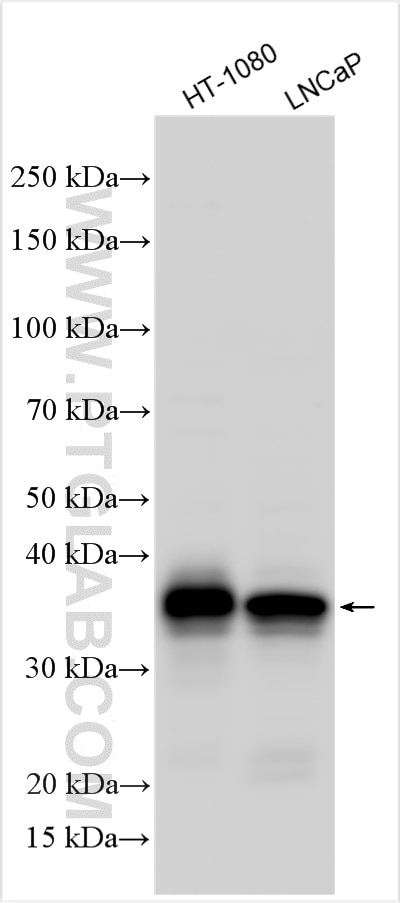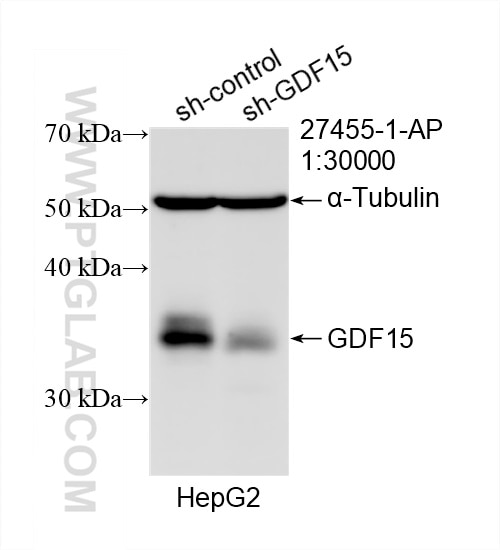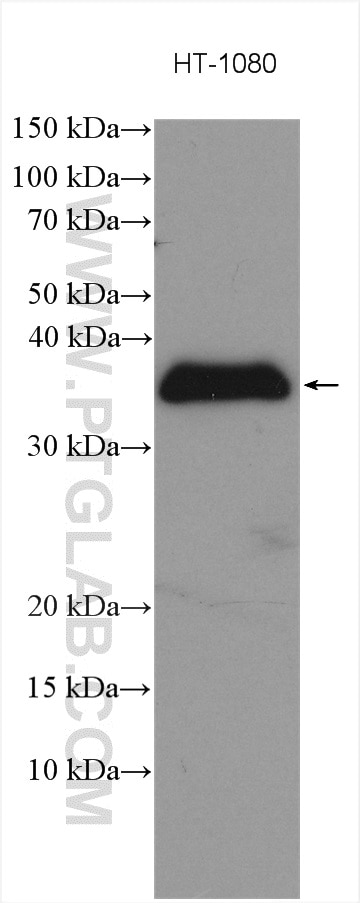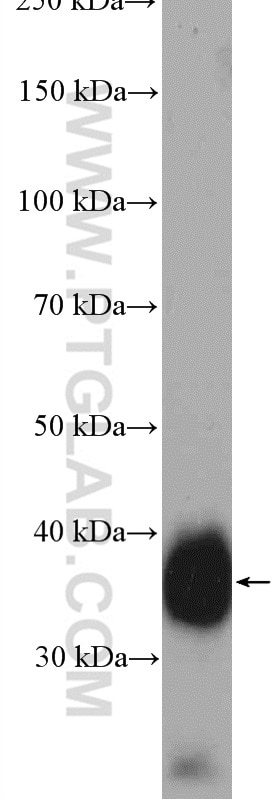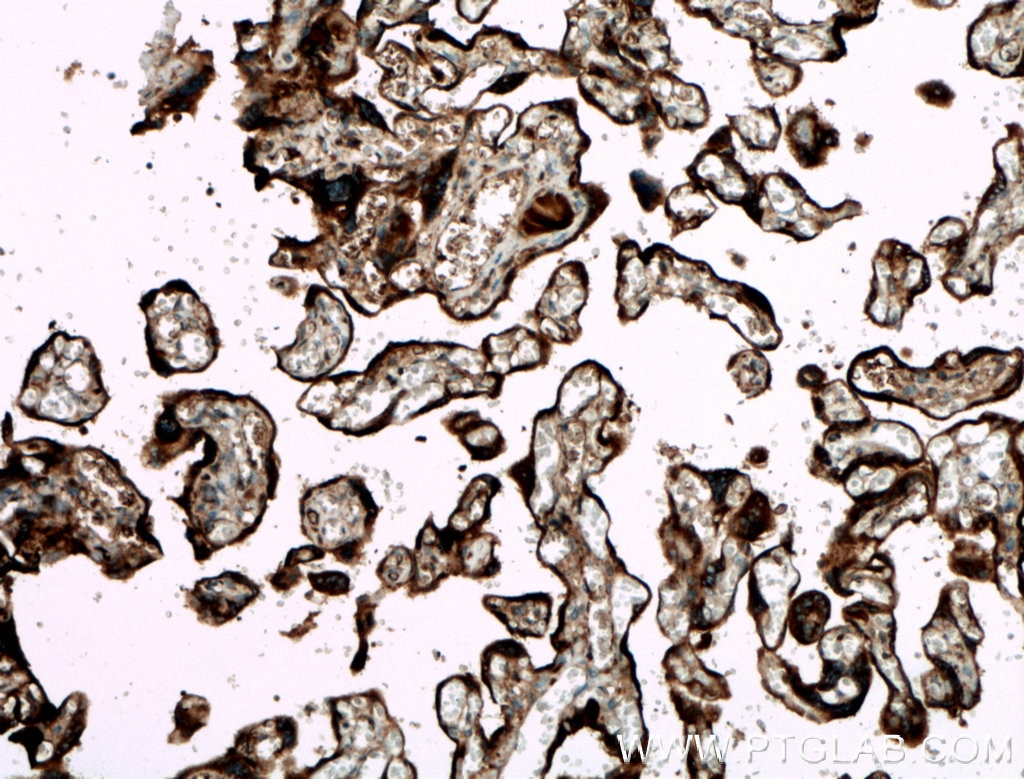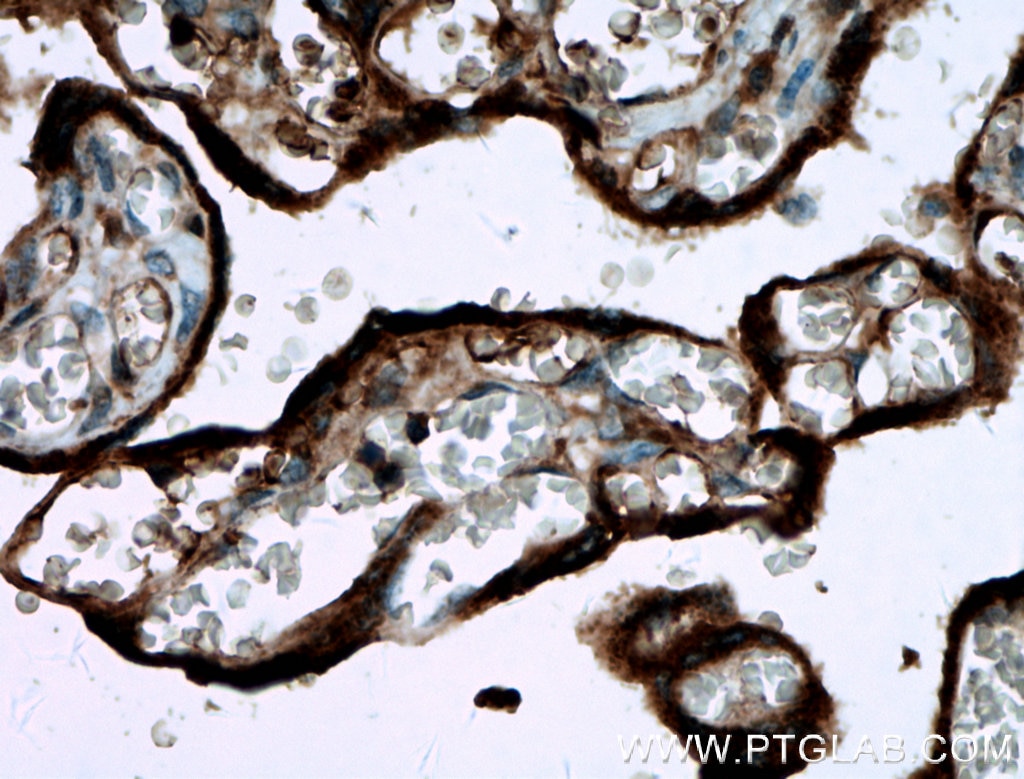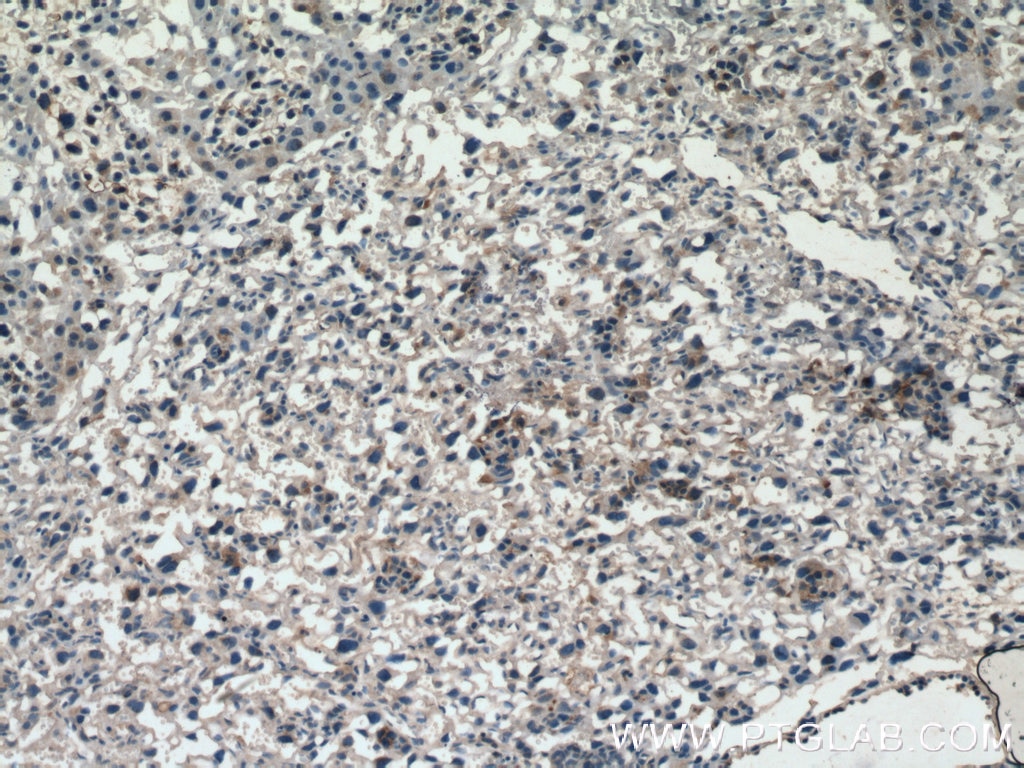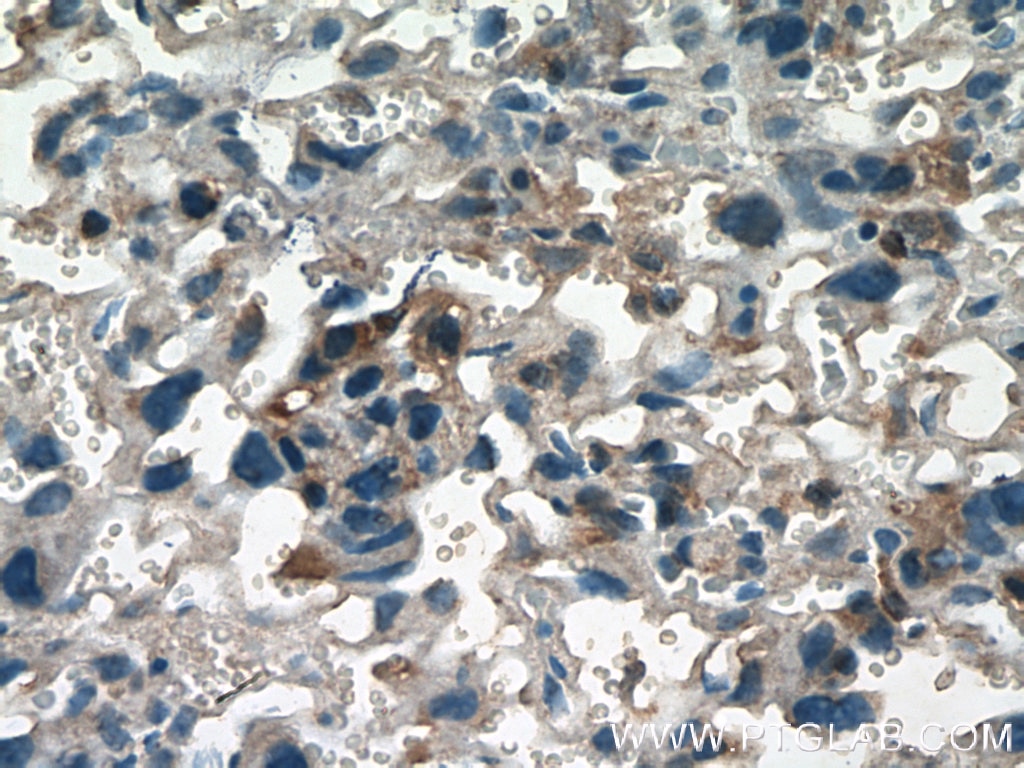- Phare
- Validé par KD/KO
Anticorps Polyclonal de lapin anti-GDF15
GDF15 Polyclonal Antibody for IHC, WB, ELISA
Hôte / Isotype
Lapin / IgG
Réactivité testée
Humain, souris et plus (1)
Applications
WB, IHC, IF, ELISA
Conjugaison
Non conjugué
N° de cat : 27455-1-AP
Synonymes
Galerie de données de validation
Applications testées
| Résultats positifs en WB | cellules HT-1080, cellules HepG2, cellules LNCaP, tissu placentaire humain |
| Résultats positifs en IHC | tissu placentaire humain, tissu placentaire de souris il est suggéré de démasquer l'antigène avec un tampon de TE buffer pH 9.0; (*) À défaut, 'le démasquage de l'antigène peut être 'effectué avec un tampon citrate pH 6,0. |
Dilution recommandée
| Application | Dilution |
|---|---|
| Western Blot (WB) | WB : 1:2000-1:10000 |
| Immunohistochimie (IHC) | IHC : 1:50-1:500 |
| It is recommended that this reagent should be titrated in each testing system to obtain optimal results. | |
| Sample-dependent, check data in validation data gallery | |
Applications publiées
| KD/KO | See 12 publications below |
| WB | See 22 publications below |
| IHC | See 4 publications below |
| IF | See 2 publications below |
Informations sur le produit
27455-1-AP cible GDF15 dans les applications de WB, IHC, IF, ELISA et montre une réactivité avec des échantillons Humain, souris
| Réactivité | Humain, souris |
| Réactivité citée | rat, Humain, souris |
| Hôte / Isotype | Lapin / IgG |
| Clonalité | Polyclonal |
| Type | Anticorps |
| Immunogène | GDF15 Protéine recombinante Ag26760 |
| Nom complet | growth differentiation factor 15 |
| Masse moléculaire calculée | 34 kDa |
| Poids moléculaire observé | 34 kDa |
| Numéro d’acquisition GenBank | BC008962 |
| Symbole du gène | GDF15 |
| Identification du gène (NCBI) | 9518 |
| Conjugaison | Non conjugué |
| Forme | Liquide |
| Méthode de purification | Purification par affinité contre l'antigène |
| Tampon de stockage | PBS avec azoture de sodium à 0,02 % et glycérol à 50 % pH 7,3 |
| Conditions de stockage | Stocker à -20°C. Stable pendant un an après l'expédition. L'aliquotage n'est pas nécessaire pour le stockage à -20oC Les 20ul contiennent 0,1% de BSA. |
Informations générales
Growth differentiation factor 15 (GDF15), also known as macrophage inhibitory cytokine-1 (MIC-1), is a protein of the transforming growth factor beta (TGFb) superfamily that regulates inflammatory and apoptotic pathways in injured tissues and during disease processes. GDF15 is a stress-induced cytokine and associated with hypoxia, inflammation and oxidative stress, it is also released from endothelial cells after stimulation with pro-inflammatory cytokines. GDF15 has been suggested as a target and biomarker for cardiovascular disease as it plays a cardioprotective role in the adult heart. GDF15 is highly expressed in the placenta. GDF15 is known to be involved in human embryo development and necessary for the maintenance of pregnancy. GDF15 is also produced by adipocytes in response to oxidative stress, a well-known factor associated with preeclampsia.
Protocole
| Product Specific Protocols | |
|---|---|
| WB protocol for GDF15 antibody 27455-1-AP | Download protocol |
| IHC protocol for GDF15 antibody 27455-1-AP | Download protocol |
| Standard Protocols | |
|---|---|
| Click here to view our Standard Protocols |
Publications
| Species | Application | Title |
|---|---|---|
Gastroenterology Hepatic Stellate Cells in Hepatocellular Carcinoma Promote Tumor Growth Via Growth Differentiation Factor 15 Production.
| ||
Nat Commun Dual functions of SPOP and ERG dictate androgen therapy responses in prostate cancer. | ||
Cancer Lett SULF2 enhances GDF15-SMAD axis to facilitate the initiation and progression of pancreatic cancer. | ||
Oxid Med Cell Longev Cyclic Polypeptide D7 Protects Bone Marrow Mesenchymal Cells and Promotes Chondrogenesis during Osteonecrosis of the Femoral Head via Growth Differentiation Factor 15-Mediated Redox Signaling. | ||
Cancers (Basel) GDF15 Is an Eribulin Response Biomarker also Required for Survival of DTP Breast Cancer Cells.
| ||
Antioxidants (Basel) Grape Seed Proanthocyanidins Induce Apoptosis and Cell Cycle Arrest of HepG2 Cells Accompanied by Induction of the MAPK Pathway and NAG-1. |
